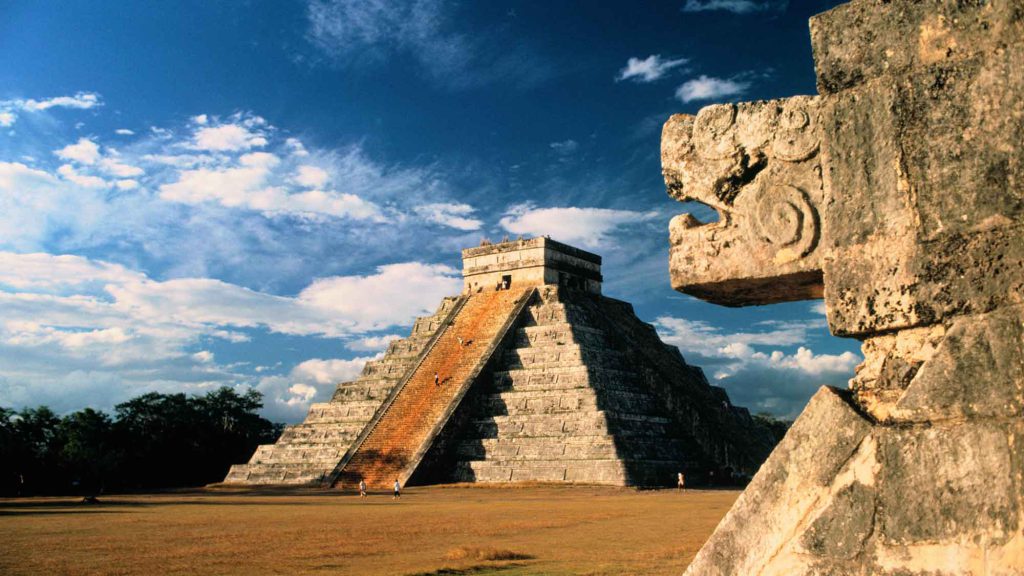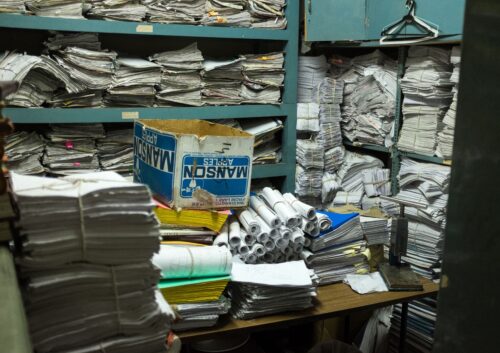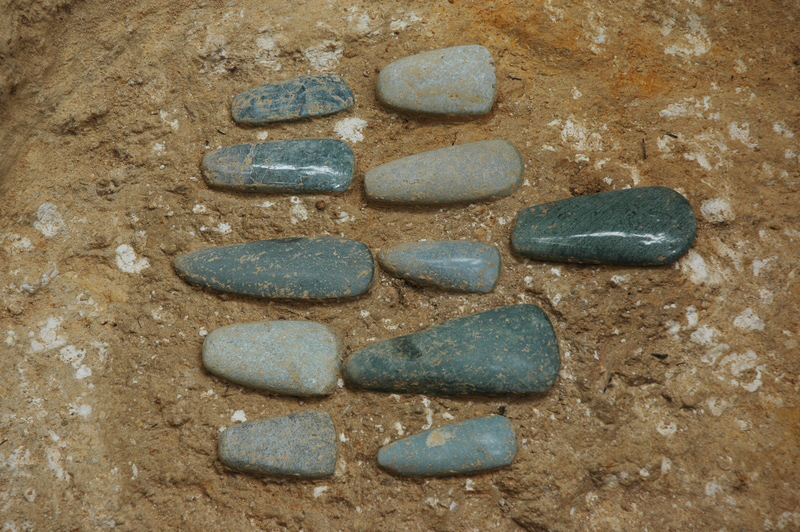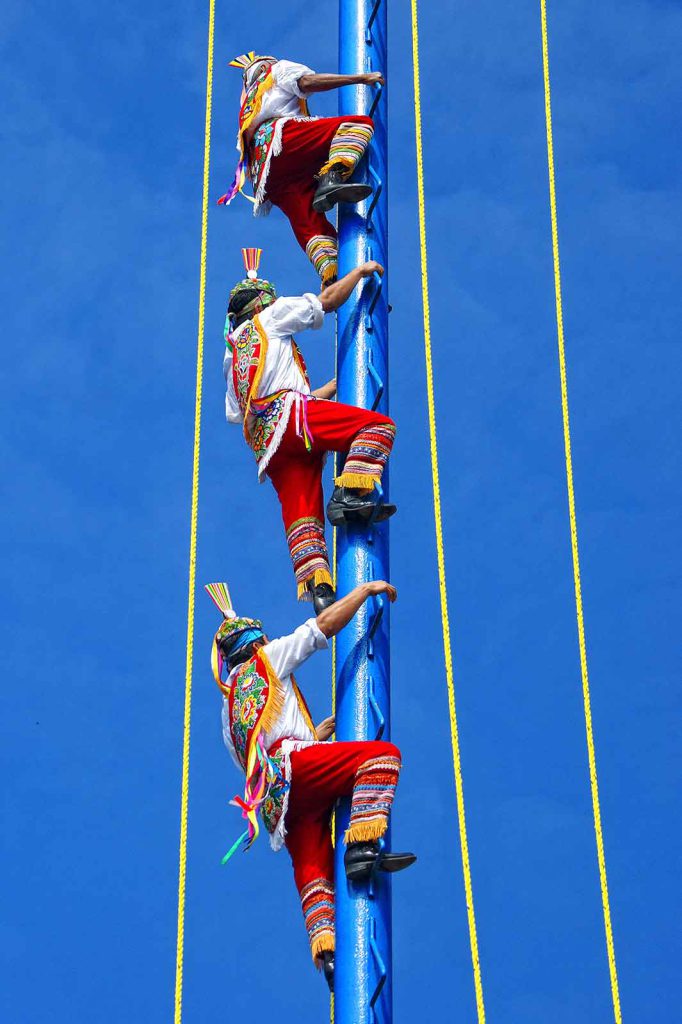Why Winter Solstice Celebrations Persist

At the ancient Maya-Toltec ceremonial complex of Chichén Itzá, tucked into the dense jungles of Mexico’s Yucatán Peninsula, the El Castillo step pyramid rises from the center of a vast plaza. Flanked by open-mouthed stone serpents at its base, the pyramid—constructed in phases, possibly starting as early as A.D. 550—was an important center of worship. But for those who knew where to look, it was also a meticulously built testament to the celestial turning points of each year.
If you visit the pyramid on December 21, the winter solstice or shortest day of the year in the Northern Hemisphere, you can witness a light show that is the same now as it was in ancient times. In the early hours of the morning, as the horizon takes on a pink glow, the sun rolls up the side of the pyramid like an otherworldly being rising into the sky.
On the late afternoon of the 21st, a shadow line divides the pyramid perfectly in two. Full sun illuminates the western and southern sides, while the northern and easternmost sides stay shrouded in darkness.
We do not know precisely what winter solstice rituals El Castillo and other sites hosted. Few written records from the time of the Maya empire have survived, and researchers have not found descriptions of specific solstice-time traditions to date. The details archaeologists have gleaned are like shards of an ancient vessel: rich with significance but unable to re-create the contours of the whole.
What does emerge clearly from ruins and artifacts, however, is just how large the sun loomed in ancient Maya conceptions of the world—and how well Maya observers understood cosmic turning points that presaged the growth of that year’s crops. “The cycle of planting and harvesting was very closely tied to the solar cycle,” says University of Arizona anthropologist Takeshi Inomata. “The solstice is an important marking.”
The Maya saw the sun as a god, and they were far from the only sun worshippers. Cultures the world over developed sophisticated systems of studying the periodic shift in daylight hours. The sun, after all, offers life-giving warmth and light, and its shifting presence also heralds the seasonal changes to which agricultural societies’ destinies are tethered.
Ancient peoples “were absolutely dependent on the sun coming” at specific times of the year, says University of Pittsburgh anthropologist Andrew Strathern. “No life can subsist without the energy and power of the sun.”
At winter solstice time, people paid tribute to this life-sustaining force. They also bonded with friends and family members, brought sparks of joy into dark days, and paused to reflect before plunging into a new year. Despite the ubiquity of modern sun substitutes like electric lights, all of these themes persist in solstice celebrations to this day. And some people across the globe are now celebrating the winter solstice without any specific religious aim, seeking to “re-enchant” modern life by connecting to our planet’s shifting solar rhythm.
Agricultural planning more than justifies many cultures’ careful tracking of the sun. What is remarkable is the sophistication with which they followed the sun in ancient times. Even before the advent of modern clocks or a standardized system of writing, humans were developing calendars and buildings that echoed solar cycles.
The Maya’s skill at following the sun’s movements helped them create a calendar system accurate enough to rival today’s astronomical calendars. Charting the path of the sun was one method they used to piece together a map of the surrounding cosmos.
At a Guatemalan ceremonial center called Ceibal, Inomata and his team recently found the earliest “solar temple” complex yet discovered, built around 1000 B.C. Originally buried under more than 20 feet of sediment, the complex features a large plaza and three central temples arranged in a row.
During their excavations, the researchers found large caches of greenstone axes—small, teardrop-shaped carvings. Such objects were likely used as offerings to deities such as the Maya sun god, and it is possible that they were part of midwinter rituals. “In one of the caches we found,” Inomata says, “those axes are oriented a little bit to the south, which is the general direction of the winter solstice sunrise.”
At a similar ceremonial site at Uaxactun, Guatemala, not far from Ceibal, solar temples appear to have been built in explicit alignment with the sun. Observers who stand on the site’s western platform can watch the sun rise directly behind the southernmost temple on the day of the winter solstice.
Societies that track the sun often associate the solstice with a new beginning—and, at times, a new year. Shortened days “meant the sun had been dying and had to be reborn,” Strathern says. “The moment of rebirth would be marked by the solstice.” And with the promise of a new beginning, many rituals aim to fill the months ahead with fortunate events.
Community traditions around the solstice also inspire a powerful sense of collective joy that cements bonds between group members. When members of a community come together for rituals, dancing, and general merrymaking, writes researcher and activist Barbara Ehrenreich, their commitment to one another and to the community’s values grows stronger. And it may be for that reason that these celebrations and rituals have proven so resilient, persisting even as the communities who celebrate them experience tremendous change.
The Maya empire that once thrived in Central America is long gone. But its legacy, however altered, lives on in contemporary Maya communities and solstice-time rituals.
Every year on the winter solstice, crowds of locals flock to Chichén Itzá to watch the sun’s direct rendezvous with the pyramid. Later, Mexicans gather at festival grounds to celebrate and partake in rituals with pre-Columbian roots—such as the palo volador (flying pole) dance, which calls for the bravest partygoers to jump off poles that are up to 100 feet high.
The sun’s shifting presence also heralds the seasonal changes to which agricultural societies’ destinies are tethered.
With ropes tied around their waists, they leap from the top of the pole and spin their bodies into a full somersault as they approach the ground. Legend has it that the Maya gods will favor the jumpers by bringing back the rains.
Solstice traditions like the palo volador may endure even when the worldview that once gave rise to them shifts dramatically. In modern urban settings, for instance, where religious observance has been waning, solstice rituals have begun to fulfill another purpose: awakening feelings of awe that grow muffled beneath the drumbeat of routine and rationality. Sociologist Max Weber, inspired by Friedrich Schiller, argued that modernity has led to the “progressive disenchantment of the world” through the rise of Enlightenment values and the decline of religious observance. This kind of disenchantment, write researchers Joshua Landy and Michael Saler, sends many people on a search for new sources of wonder and “re-enchantment.”
Many winter solstice traditions went underground in the West for hundreds of years as newer holidays such as Christmas took precedence—although older solstice-time practices, such as Yule logs and mistletoe boughs, both linked to pre-Christian traditions in Europe, persisted. But the solstice is now re-emerging as a source of deep meaning that can exist independent of a divine being.
Enchantment, as Weber defines it, includes an element of mystery—the sense that there is some larger order that eludes our full understanding—and some solstice fans say the cosmos supplies as much intrigue and mystery as any deity. Every year, eclipse-watcher Polly White of Santa Fe, New Mexico, hosts partygoers for a winter solstice celebration focused on the wonders of the natural world.
As the sun sinks below the backdrop of the nearby Jemez Mountains, White and her guests light clusters of candles, switch on twinkle lights, and toast the shortest day of the year with warm drinks. Once night descends, they head to a large telescope on the property for night-sky viewing sessions. White and her husband don’t consider themselves religious, but they see their annual tradition as rich with significance for all who attend. “It is a yearly reminder that we should stay in tune with the natural rhythms of the planet,” White says, “and celebrate and enjoy what each phase brings.”
In an age of LED street lamps, artificial daylight, and convenience foods, modern life might seem decoupled from the direct influence of the sun. But this apparent decoupling is an illusion. The sun still provides essential heat and life to our planet, without which the Earth would freeze. Now, as in earlier times, solstice observance can remind celebrants of their dependence on the natural world and the molten ball of energy that sustains us all—a dependence that, in the long run, remains as absolute as ever.
What many of us most seek in midwinter, just as the ancients did, is reassurance that the light will eventually return. Solstice rituals can help supply that kind of bedrock faith—not necessarily in a deity or a set of beliefs, but in the ongoing cyclical nature of life on Earth.
In a time of instability on many levels—political, ecological, cultural—there is something steadying in a golden orb that rolls up the side of a pyramid. Such a sight, glimpsed throughout the centuries, helps sustain communities until the darkness lifts and the Earth begins to green again. Knowing that day will come, people can fling themselves into the unknown, palo volador–style, and welcome whatever that brazen leap might bring.



























